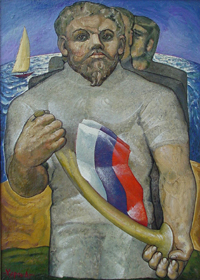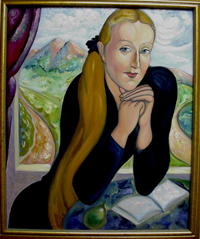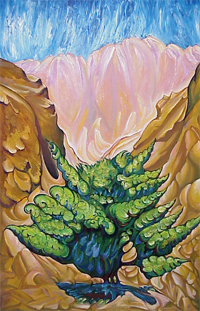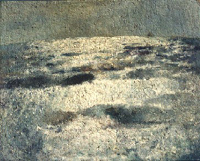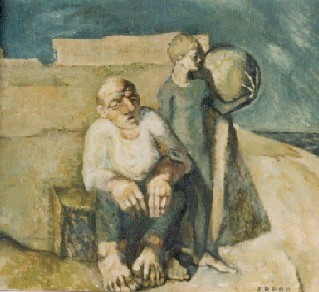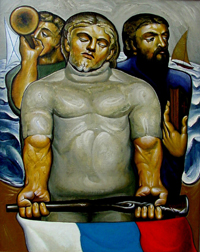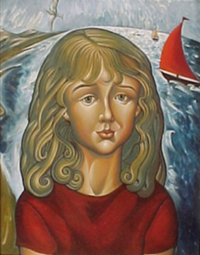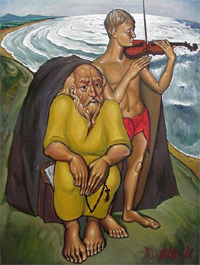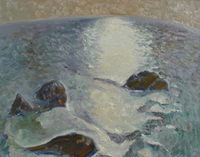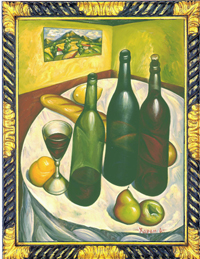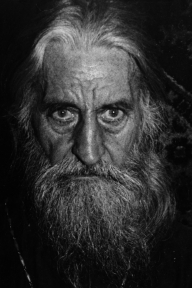
Elder Father Andrew of St. Glinskaya Pustin in Holy Russia, blessed Aleksandr's iconographical work in a canonical Byzantine-Russian style. The process of painting of icons was lost during soviet era and Aleksandr had to find the orinigal processes from the books of Erminia authored by Dionysius of Fourma. The books were donated from St. Panteleimon monastery collection on St. Mnt. Afon in Greece.
"For Freedom in Russia" ~ 1976, canvas, oil, 40"x35"~
Private Collection
|
1975 started his work on icons and in 1978 began his work on the church of “The Nativity of the Theotokos” by the city of Odessa, Ukraine. Father Basil Multih served the church for 30 years and he protect Aleksandr from the soviet government agencies. During that period the painting of icons was unlawful under the soviet laws. Kharon constantly had to fight against the nefarious will of the KGB and ideological officials for his right to create an original art that did not fit in the procrustean bed of enforced official doctrine. When he was released, he continued his work in secret and as the regime began to change he was again able to work on the Church. The work on the new icons for the "The Nativity of the Theotokos" was completed by 1986. By this time Aleksandr Kharon was an extremely renowned artist and iconographer.
"Black
Sea"~1970, canvas, oil, 30"x36"~
LucOil Foundation Museum, Vienna, Austria
|
Aleksandr and his family moved to Italy in an attempt to eventually immigrate to the United States. While living in Italy, Aleksandr was commissioned to work for The Vatican. Fifteen of his works are now present in the Vatican's collection. In the 1990, when an opportunity arose Aleksandr's family decided to immigrate to the Unite States. Upon arrival in United States his family settled down in San Diego where he had his first U.S. commission for the Russian Orthodox Church.
Please continue to second page of the biography of Aleksandr Kharon
